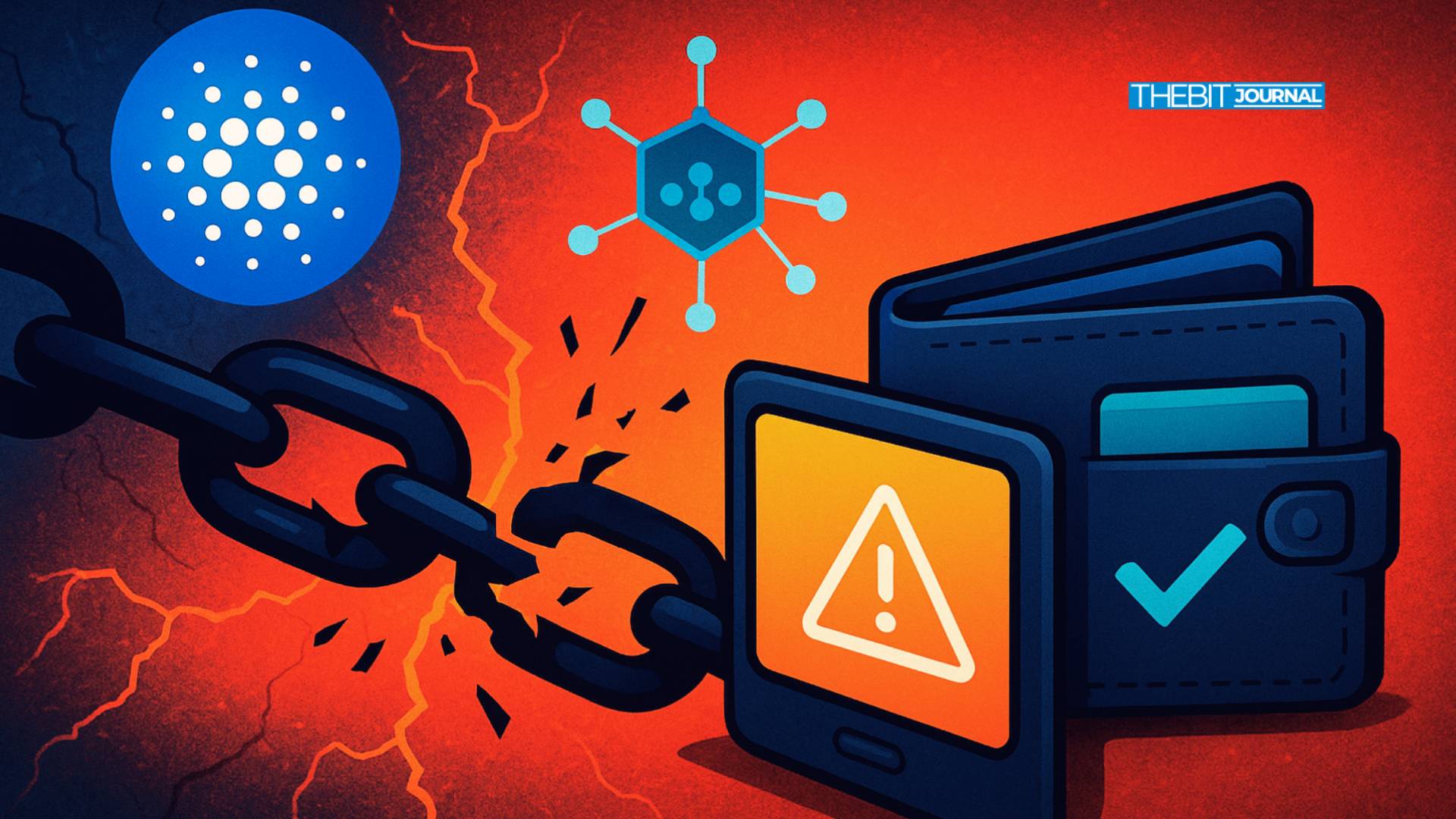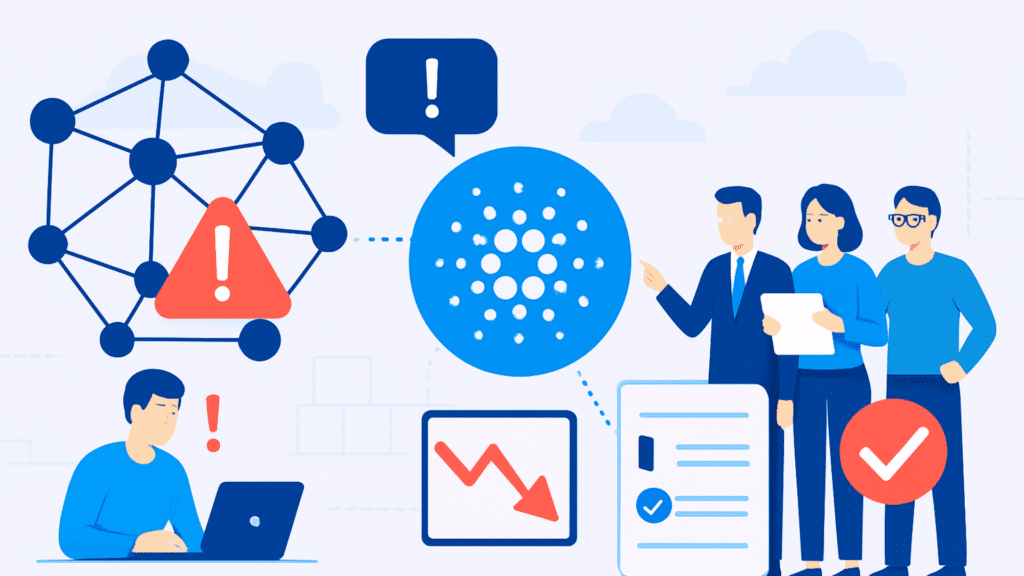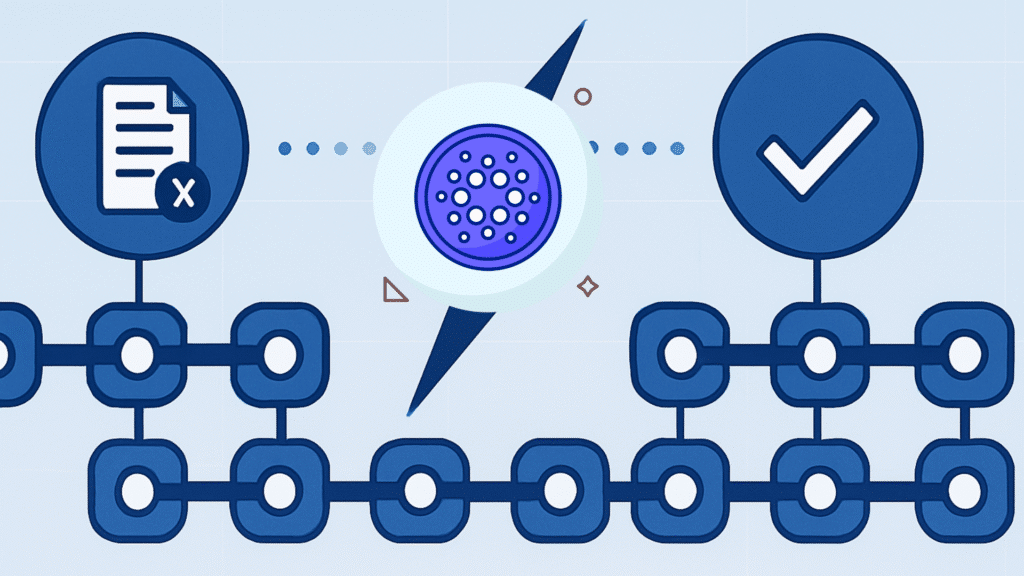Cardano vs Cardano: How Network Forked Into Two Valid Chains
0
0

This article was first published on The Bit Journal.
The Cardano chain split gained worldwide attention after one faulty delegation transaction triggered an old bug, causing the network to operate on two separate histories for about 14.5 hours. This happened on November 21 and acted as a real stress test for Cardano’s system, exchanges, and node operators.
Developers released fixed node versions to bring the ledger back together, while investigators acted quickly after a former stake pool operator admitted sending the faulty transaction.
Since exchanges paused $ADA activity and some wallets showed different balances, the event gave a rare look at how a live layer-1 system behaves when different software versions disagree on what is considered a valid transaction.
What does the Cardano chain split mean in a technical sense?
The Cardano chain split happened because different node versions disagreed on whether a staking-delegation transaction with an oversized hash was valid. The issue came from a hash-deserialization bug that had quietly existed since 2022.
Nodes running versions 10.3.x to 10.5.1 accepted the bad data, while older versions rejected it, causing the network to break into two views of the $ADA ledger. The disagreement caused a poisoned branch that accepted the invalid transaction and a healthy branch that rejected it.
Both branches continued creating blocks normally under Ouroboros rules, leading to the unusual situation of two histories running side by side.
How did the Cardano chain split begin and why didn’t it lead to deeper damage?
The sequence began early in the morning on November 21 when the malformed transaction reached the mainnet. A similar issue had appeared the night before on the Preview testnet, giving engineers an early idea of what they were dealing with.

As the mismatch grew, infrastructure teams noticed block explorers showing different results, and stake pool operators saw mixed tip hashes and slower block production. Even with the issue, no funds were lost and the chain never went offline.
Core checks like signature verification and stake weighting continued to work normally. The problem was only in the application layer, which kept the impact limited.
Why did authorities become involved in the Cardano chain split?
The former operator who sent the transaction later said he built it using AI-generated instructions. And admitted that he did not mean to cause any harm.
Cardano co-founder Charles Hoskinson reported the issue to the proper authorities, including the FBI, since sending an exploit into a live financial network may violate U.S. computer-misuse laws such as the Computer Fraud and Abuse Act.
Investigators are now checking whether the submission should be treated as unauthorized interference with a protected network.
How was the Cardano chain split contained and resolved?
Intersect, Cardano’s ecosystem governance group, helped coordinate communication between IOG, the Cardano Foundation, EMURGO, top stake pool operators, and major exchanges. A public incident alert was released within minutes.
Developers discovered what caused the issue and issued fixed node versions 10.5.2 and 10.5.3. As operators upgraded, the network gradually returned to the healthy chain. By later that night, the network had fully aligned again and the faulty branch was dropped.
Cardano did not need to use its full disaster-recovery plan under CIP-135, but having it helped guide decisions. A special team was later set up to sort out transactions that existed only on the poisoned branch.
What lessons does the Cardano chain split offer for other layer-1 blockchains?
The incident provided a real-world comparison of different blockchain designs. Cardano kept running but briefly had two competing histories. Solana usually does the opposite, stopping completely when its single client fails and then restarting manually.
Ethereum follows a middle path, running multiple clients for backup. In early 2024, some Ethereum validators fell behind due to a bug in Nethermind.
Other clients such as Geth and Prysm continued running, so the network stayed steady. This setup helps prevent a Cardano chain split even when one part of the system has issues.
What broader insights did developers draw from the Cardano chain split?
The incident showed why it’s important to test serialization and deserialization code thoroughly, especially in older parts of the system. Differences between node versions acted like separate clients disagreeing, showing how depending on a single implementation can create major risks.
The Preview testnet showed that reporting bugs responsibly could have avoided problems on mainnet. Intersect later said these issues could earn bug-bounty rewards, while testing directly on mainnet might have legal consequences.
The event highlighted the need for better reporting. Additionally, for more thorough testing, and stronger monitoring.
Cardano Chain Split and Blockchain Stress Comparison
The Cardano chain split started on the Preview testnet the night before November 21, 2025, when a malformed delegation transaction exposed a long-dormant hash-deserialization bug. Engineers spotted the issue early and prepared a fix.

The following day, the identical transaction reached mainnet, impacting nodes on versions 10.3.x through 10.5.1, while older versions rejected it.
Exchanges paused $ADA flows while stake pool operators monitored the network. Nodes 10.5.2 and 10.5.3 fixed the issue, and the network came back together by the end of November 21.
A team sorted transactions from the poisoned branch. In contrast, Solana in September 2021 faced over 400,000 transactions per second from bot traffic, which overloaded validators and paused vote propagation, showing how blockchains respond differently under stress.
Conclusion
The Cardano chain split offered a rare look at how a live blockchain reacts when software versions disagree. For about 14.5 hours, the network stayed active but split, with operators relying on voluntary upgrades instead of emergency resets.
The event showed that even well-established chains can encounter stress when versioning and validation drift. Analysts say the incident will likely shape how projects approach client diversity, disaster recovery, and testing older code.
While Cardano handled the situation successfully, the Cardano chain split highlights that network resilience relies on protocol design, operational discipline, clear communication, and proper bug disclosure.
Glossary
Chain Split: When a blockchain temporarily breaks into two versions.
Node Bug: A mistake in the node software that causes issues.
Poisoned Chain: The chain that accepted a bad transaction.
Healthy Chain: The chain that ignored the bad transaction and stayed correct.
Ouroboros: Cardano’s way of making blocks and keeping the network safe.
Frequently Asked Questions About Cardano Chain Split
When did the Cardano chain split happen?
The split happened on November 21, 2025, and lasted about 14 and a half hours.
Why did the Cardano chain split happen?
It was caused by a bug in the node software. Some nodes accepted a faulty staking transaction, while others rejected it, which split the network temporarily.
How many chains formed during the split?
There were two chains for a short time. One chain accepted the bad transaction, and the other didn’t.
Who caused the Cardano chain split?
A former stake pool operator sent the faulty transaction. They used AI-generated instructions to create it.
Did the split impact exchanges and wallets?
Yes, exchanges had to stop ADA transactions for a while, and some wallets showed different balances.
What did we learn from the split?
The event showed the need for better testing of old code, the importance of using different client software, and having clear disaster recovery plans for blockchains.
Sources
Read More: Cardano vs Cardano: How Network Forked Into Two Valid Chains">Cardano vs Cardano: How Network Forked Into Two Valid Chains
0
0
 Manage all your crypto, NFT and DeFi from one place
Manage all your crypto, NFT and DeFi from one placeSecurely connect the portfolio you’re using to start.





